|
Location:
Antillana del Mar,
Cantabria,
Spain. |
Grid Reference:
43� 22' 00" N.
2� 42' 00" W. |
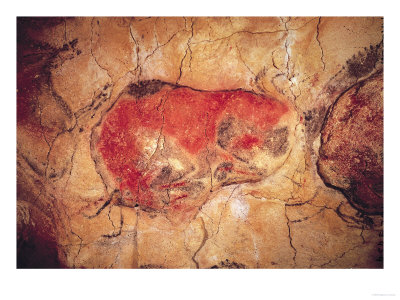
 Altamira:
(Magdelanian Cave Art).
Altamira:
(Magdelanian Cave Art).
'The Sistine Chapel of Palaeolithic Art'
Particularly famous
for being the first example of European Cave art ever discovered. The
discoverer
Marcelino Sanz de Sautuola's
of the paintings in the cave in
1879
was sadly pilloried as a forger till his
death fifteen years later. It wasn't until another five years after
his death that another example of cave art was discovered which
restored his reputation as an archaeologist.
(Internal
ground-plan of the Cave System)
Description: There are three
major sites containing cave paintings in Northern Spain which
are presumed to have been painted by the Magdalenian people
between 16,000-9,000 BC, but Altamira is the only site at which the signs of domestic life extend into the
first cavern which contain the actual paintings.
(1)
The Altamira cave is one of
seventeen found along the mountains of North Spain
near the Atlantic coast. At around 300m long, the cave system
consists of a series of twisting passages ranging from 2 - 6m
high upon which over a hundred animal figures were drawn on the
ceilings.
In 2008 British scientists dated the
paintings with the U/Th method. Before the carbon of the
charcoal in the paintings was used to determine the age of the
paintings using the C14 method. Obviously this works only for
the black parts of the paintings which contain carbon. Uranium
decays to thorium and this process happens in any kind of
calcite deposit. This method measures the uranium and thorium
content in flowstone crusts which grew on top of the painting.
As a matter of fact this method only gives a minimum age, but it
is usable also for engravings and paintings without charcoal.
The results are astonishing: parts of the artworks are between
25,000 and 35,000 years old.
(2)
During the 1960s and 1970s, the
paintings in the Altamira Cave were being damaged by the damp
breath of large numbers of visitors. Altamira was completely
closed to the public in 1977, and reopened to limited access in
1982. Very few visitors were allowed in per day, resulting in a
three-year waiting list. At the present time, a study is being
made of the conservation conditions inside the Cave of Altamira,
so it is NOT possible to visit it. A museum and an unsatisfying,
cheap replica of a small section of the cave were built nearby
(You've been warned).

Artistic analysis: The paintings at Altamira
are polychrome, having as many as three colours in the body of a single
animal, a significant advance in technical artistic skills. The
same artistic skills are further reflected in the
accuracy of the physical proportions of depicted animals.
One of the most impressive things about the animal figures are
that many were painted on natural protrusions from the
rock face; something seen in other caves from the Palaeolithic,
although most samples of cave painting ignore the natural
character of the rock concentrating on only one dimension. The
images at Altamira were both painted and engraved.
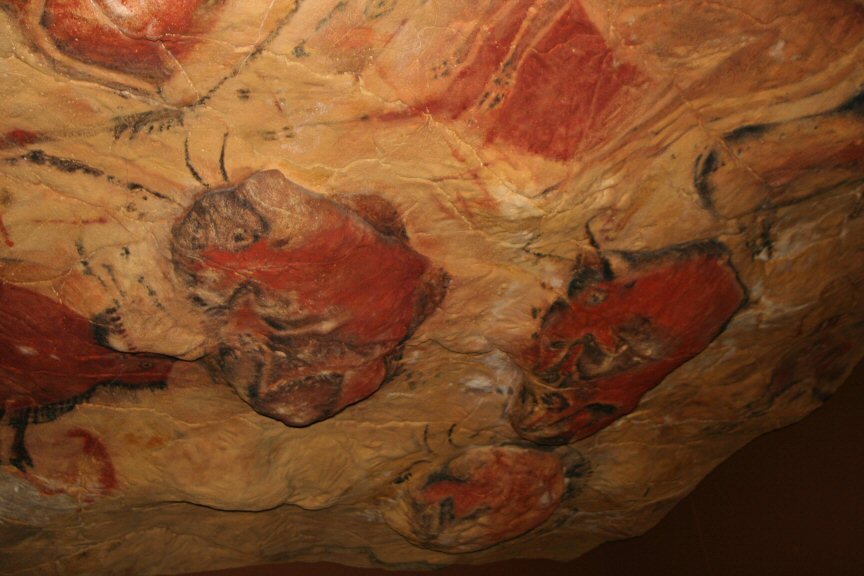
Examples of
the way in which the protrusions on the ceiling were utilised to
enhance the art.
(Other
Examples of 3-Dimensional Cave-Art)
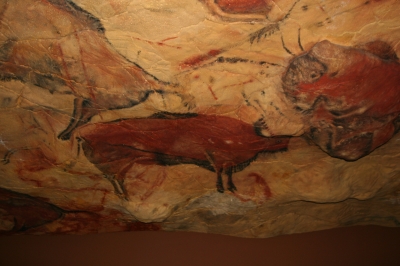
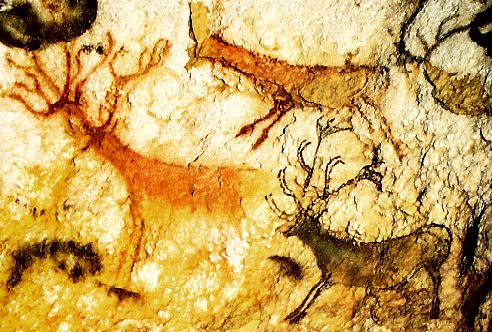
In the complex of painting in the
cave, bison's in different positions are most common and carried out
most expertly. Other animals include horses, red
deer and boar. The animal figures are painted to almost
life-size scale, e.g. the red deer is 2.20m long. The artists
very painstakingly depicted its specific and sexual features.
The use of relief has given the pictures a special
dynamism and movement of the animals. Even the texture of the furs and manes of the different
species painted on the rock surface were included.
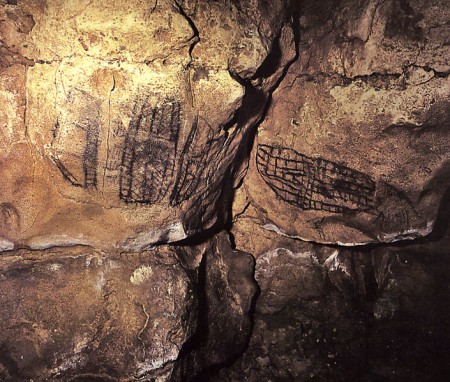
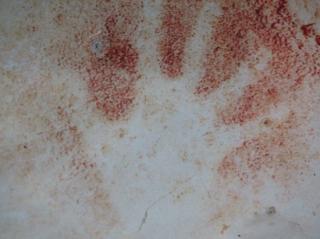
Other drawings, described as anthropomorphous,
show humans with animal heads as well as different signs, such
as hands or comb-and step-like symbols still not understood.
Article:
Telegraph (Oct. 2011):
'Spain to reopen
Altamira Caves despite risk of destroying
prehistoric paintings'.
Spain's Altamira caves, which contain some
of the world's best prehistoric paintings, are
to be reopened to the public, despite warnings
that human breath will destroy the
20,000-year-old paintings.
(Link
to full article) |
Gallery of Images:
Altamira.

(Other
Prehistoric Spanish Sites)
(Cave-Art Homepage)
(Palaeolithic
Homepage) |